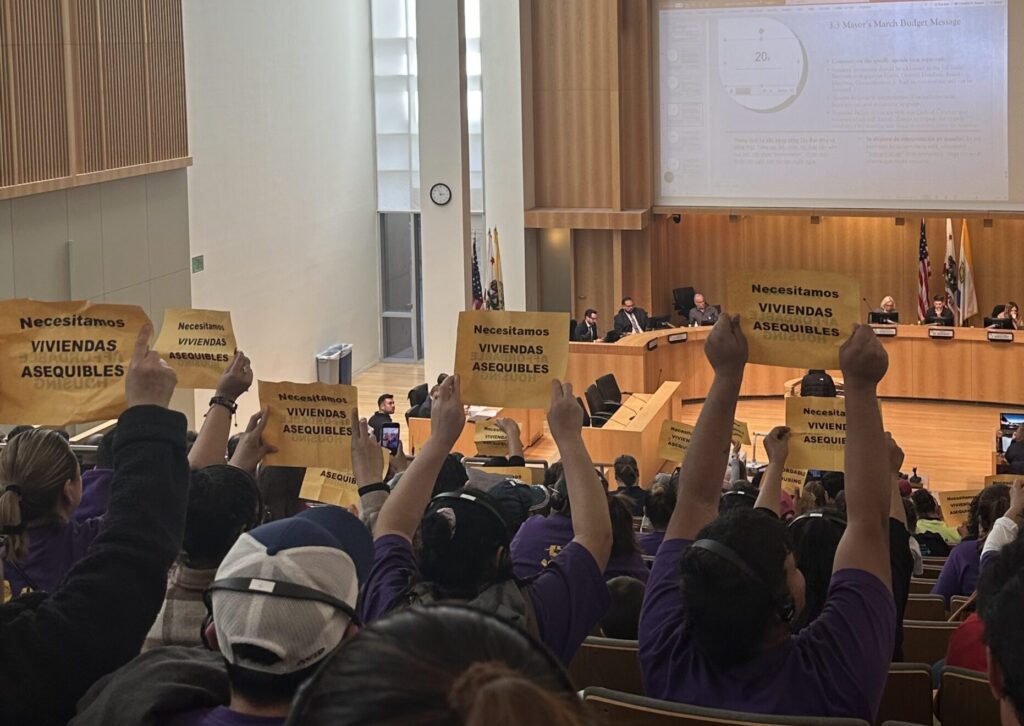Every year the Mayor of San Jose releases the March Budget Message and brings it to the City Council kicking off the beginning of budget discussion for the coming year. The Budget Message is not actually a budget, it does not include tables with revenue and proposed expenditures, it is rather an outline of the Mayor’s priorities. It also includes direction to the Budget Director in the office of the City Manager to prepare a detailed budget and analysis that will support the Council’s ongoing deliberations in the run-up to the approval of a final budget in June.
Mayor Mahan’s Budget Message was heard at council on March 19th. He proposed the same four focus areas he had in last year’s budget message: Reducing Unsheltered Homelessness, Increasing Community Safety, Cleaning up our Neighborhoods, and Attracting Investment in Jobs and Housing. Just as last year, the Mayor was clear that affordable housing production was not part of his agenda for the coming year, and that all affordable housing resources should be redirected to Emergency Interim Shelters which provide temporary shelter for people currently living unhoused.
Last year we came together to say that it was both shortsighted and detrimental to our communities to stop investing in permanent homes that people can afford, even as we are committed to supporting interim shelter as an important part of our coordinated response to the housing crisis. In response to an outpouring of community concern last year, the city council decided that the Mayor’s approach wasn’t in line with what we knew were the long-term best interests of the city, and approved a budget that balanced funding for Production, Preservation, and Prevention as well as the expansion of the Emergency Interim Shelter system.
Last year the council also issued a clear warning, and clear direction to the City Manager:
- the costs of managing and expanding the interim shelter system were not sustainable with existing revenues,
- and, the city needed a long-term strategy for funding the ongoing costs of building and servicing these sites.
In the last year, no permanent funding source has been identified and the production and management costs of the interim sites have skyrocketed as the council has expanded its commitment from 1,000 beds to over 1,700 beds and safe parking spots. At the same time, the City was only able to fund four of the 17 affordable housing projects that submitted applications – leaving over 1,500 affordable homes on the “waiting list.”
Thankfully, the council – led by councilmembers Ortiz, Candelas, Jimenez, Torres, and Davis – has once again noted that increasing affordable housing production is a priority in city surveys even if it has been left off the Mayor’s list, and has asked for all of the costs and opportunities to be explored and presented to the council for consideration including:
- An analysis of cost, time frame, and probability of individuals accessing stable housing, for each housing and shelter model
- An analysis of the impact of the reallocation of any Measure E (affordable housing) revenue for the provision of essential services to our unhoused residents, to meet stormwater permit requirements and the City’s ability to issue new NOFAs for affordable housing. Including impact on NOFA-waitlisted projects and other projects in the pipelines.
- Propose alternative scenarios that would lessen the impact on funding for permanent affordable housing.
- Prepare an analysis of potential revenue measures the Council could explore to help address housing and homelessness initiatives.
This year’s budget discussions will be even more challenging than last year. Often important programs that receive “one-time” funding in the annual budget are successful and are renewed each year, this could be an afterschool program or support for crisis intervention teams to work with the police department to respond to mental health calls to 911. If this practice continues, as the Mayor has recommended, the city faces a deficit of over $50 million. Much of this shortfall can be traced back to the expanding costs of commitments to interim shelter construction and operations – roughly $50-75 million in the coming year and increasing to $70-100 million by 2028. There are a lot of other city priorities in play, and the mayor’s proposals will likely lead to significant reductions in city services in addition to eliminating affordable housing funding.
As this process moves forward, SV@Home will continue to share updates and information on the different outcomes and costs of comprehensive housing solutions. We have already shared our concerns and reaffirmed our commitment to supporting the necessity of identifying an ongoing revenue source for interim shelters and homelessness response programming. Some of you sent letters or gave public comment in person on the 19th, but this year we need the entire affordable housing community to get involved. Together we can ensure that San Jose continues to be accountable to the needs of residents in all its communities.
